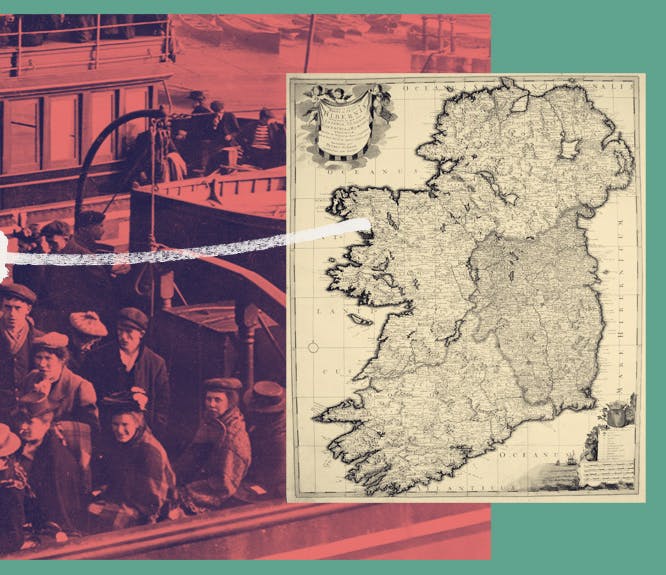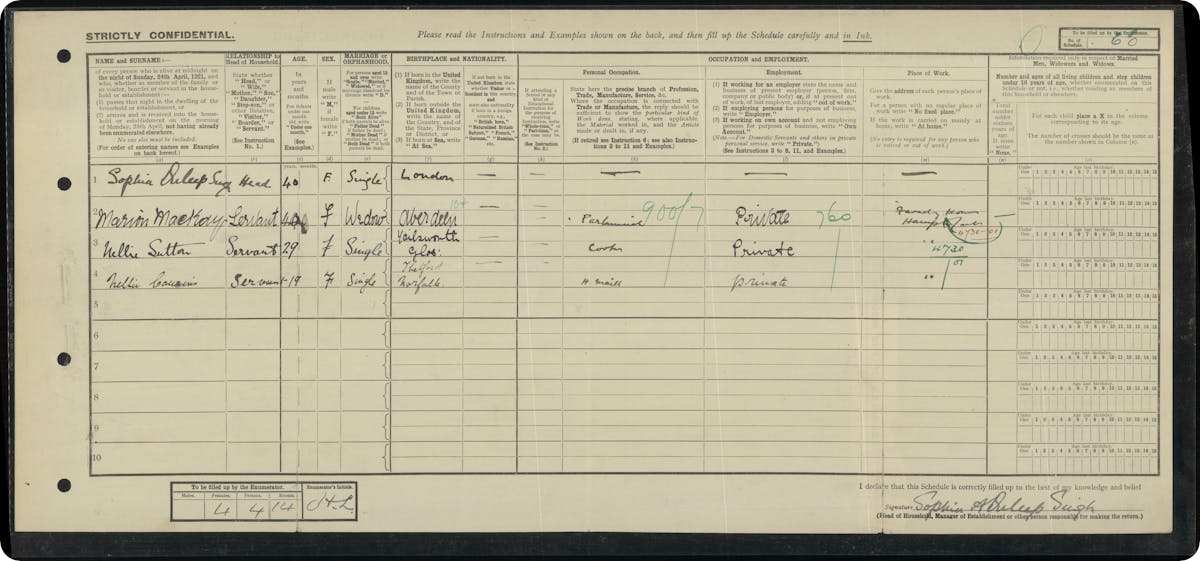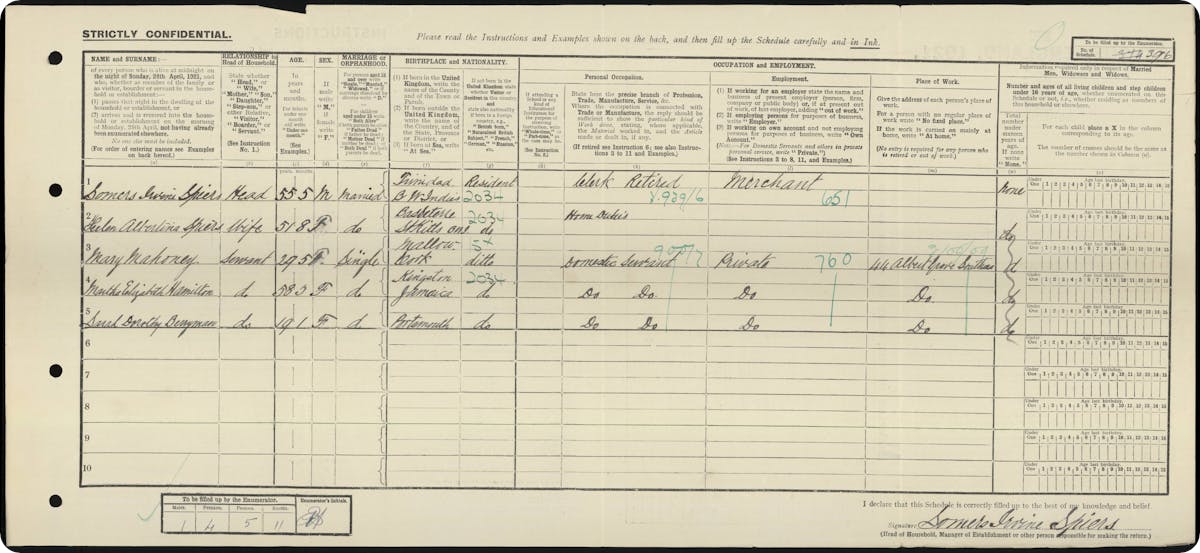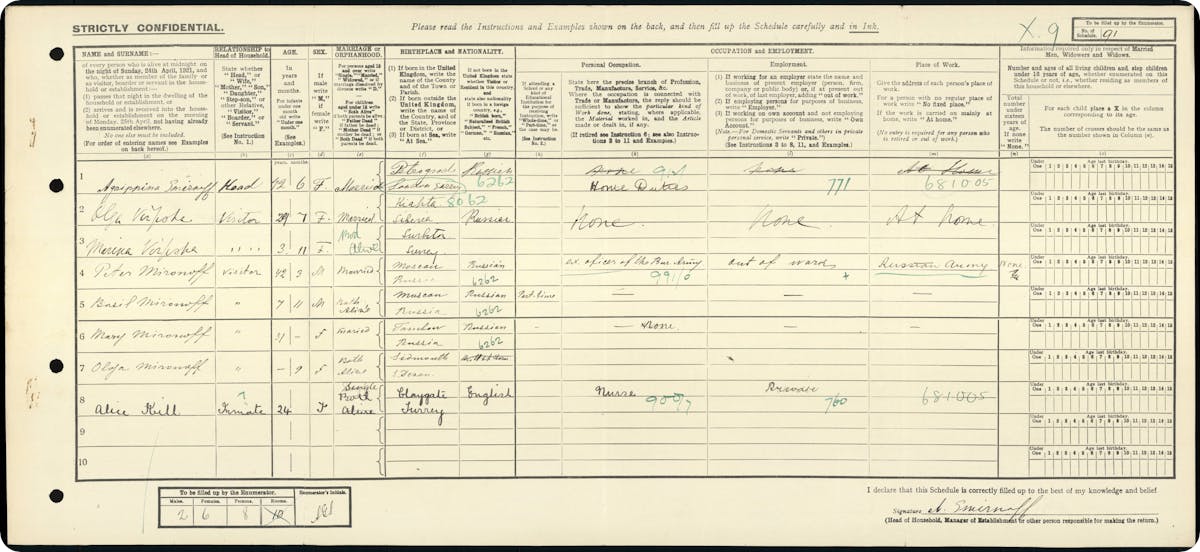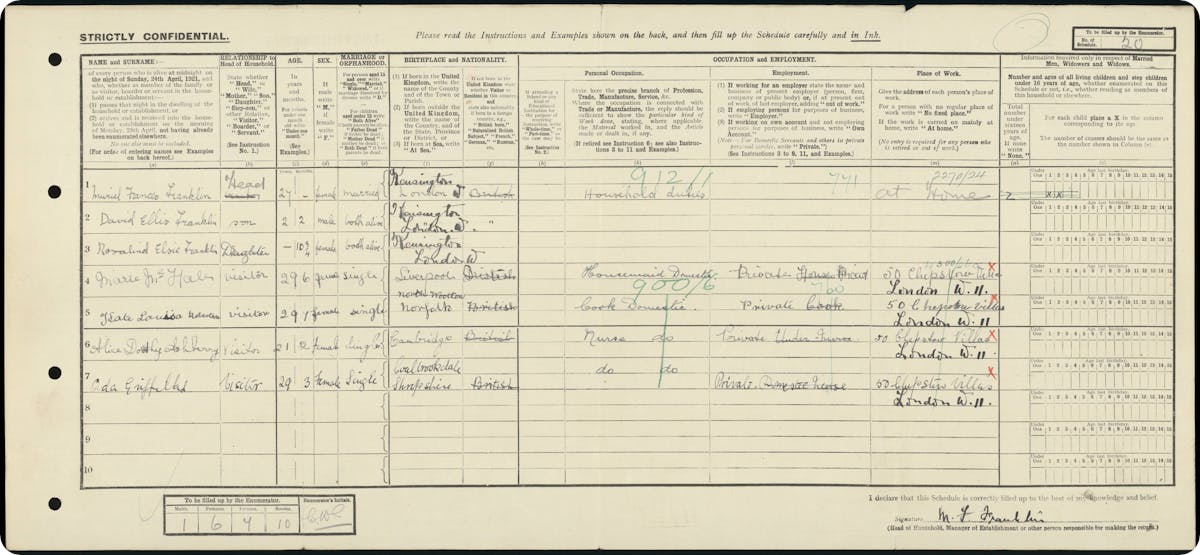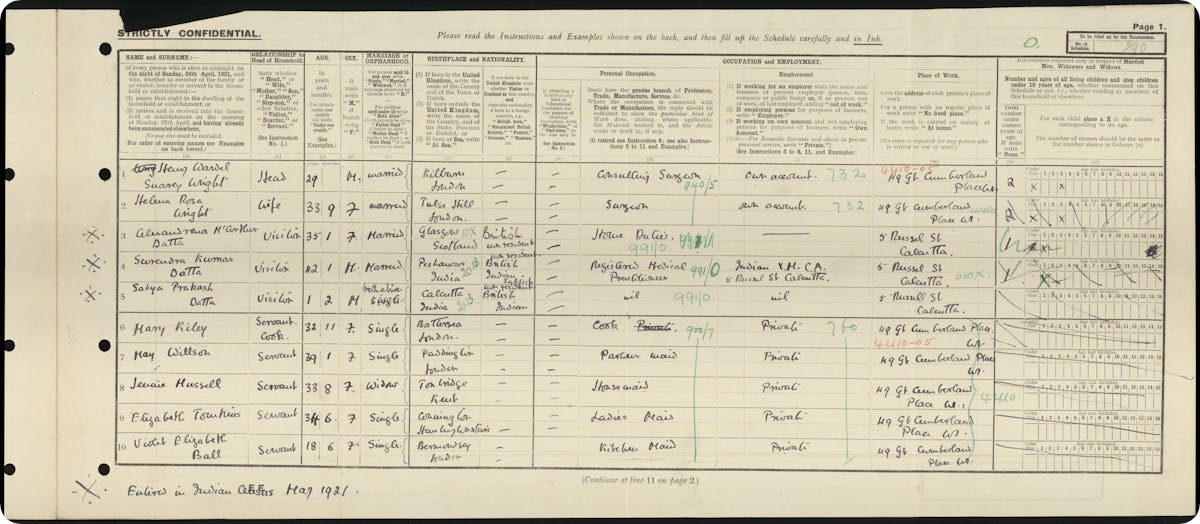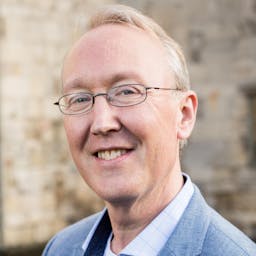Diversity and diaspora in the 1921 Census
8-9 minute read
By Brian Donovan | November 7, 2022
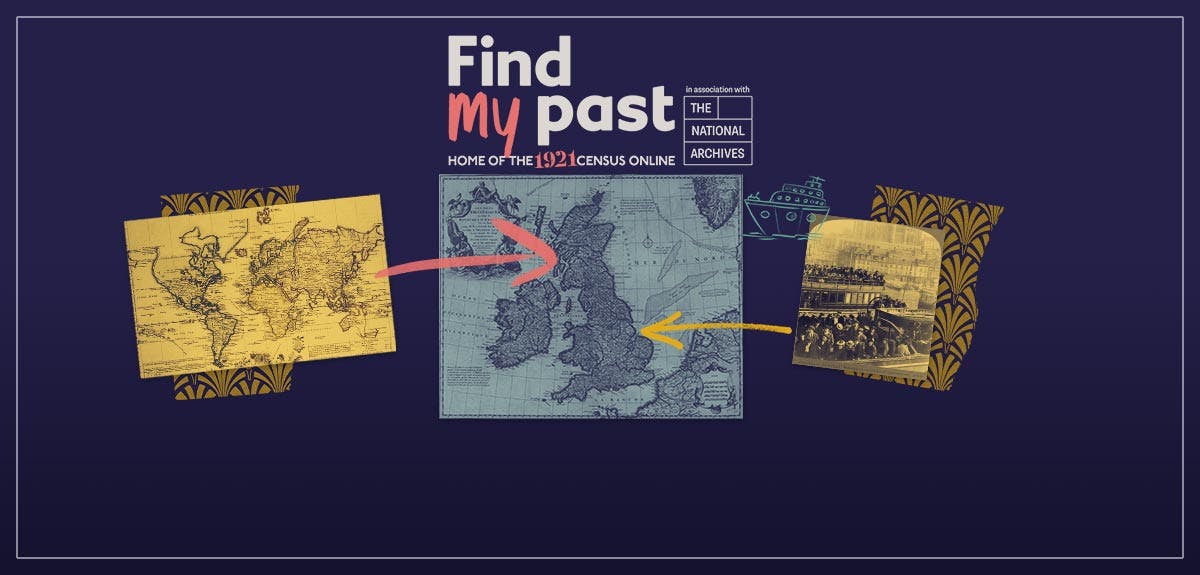
The 1921 Census of England and Wales doesn't just uncover British history, but shines a light on the long-standing richness of British multiculturalism.
Officially almost 38 million people were enumerated in the 1921 Census. Its remit was England, Wales, the Isle of Man, and a number of British Islands. But not all those recorded were natives of those places. In fact, more than 1.2 million (3.4%) citizens in the 1920s were born elsewhere.
The chart below lists where the largest numbers who were born abroad came from:
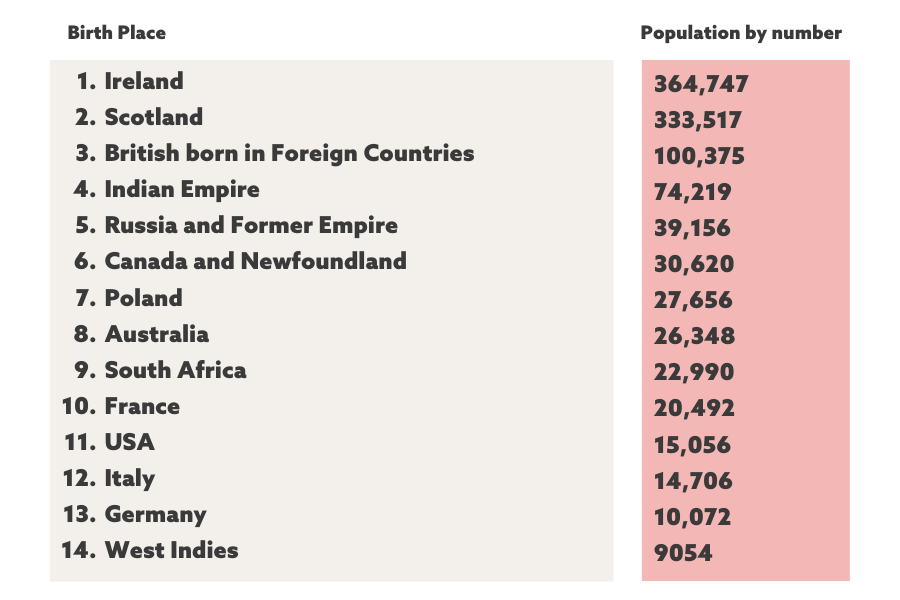
A chart depicting the population of other nationalities in England and Wales in 1921, by number.
Of course, many more were of foreign heritage too, the children or grandchildren of immigrants.
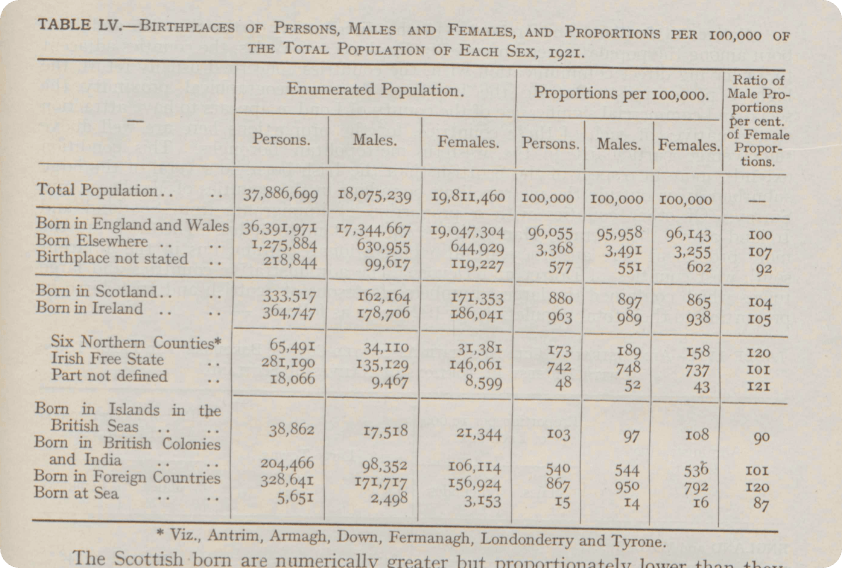
A table entitled 'Birthplaces of Persons, Males and Females, and Proportions per 100,000 of the Total Population of Each Sex'.
It's more difficult to identify the totality of those of foreign heritage, but we do know a lot about those who were born elsewhere from the census returns, and the free-to-view official reports that were compiled six years after it was taken. So, it's worth taking a look to see where these diverse communities came from to help you understand the diaspora across British history.
Irish migration
It's no surprise that Ireland tops the list. The industrial cities of England had provided a livelihood for the Irish rural population for over a century. What is interesting is that 1921 represents a low point, having been superseded by affordable travel and better prospects in America since the 1880s. Irish migration to Britain was about to change again and would rise consistently between this date and the early 1960s.
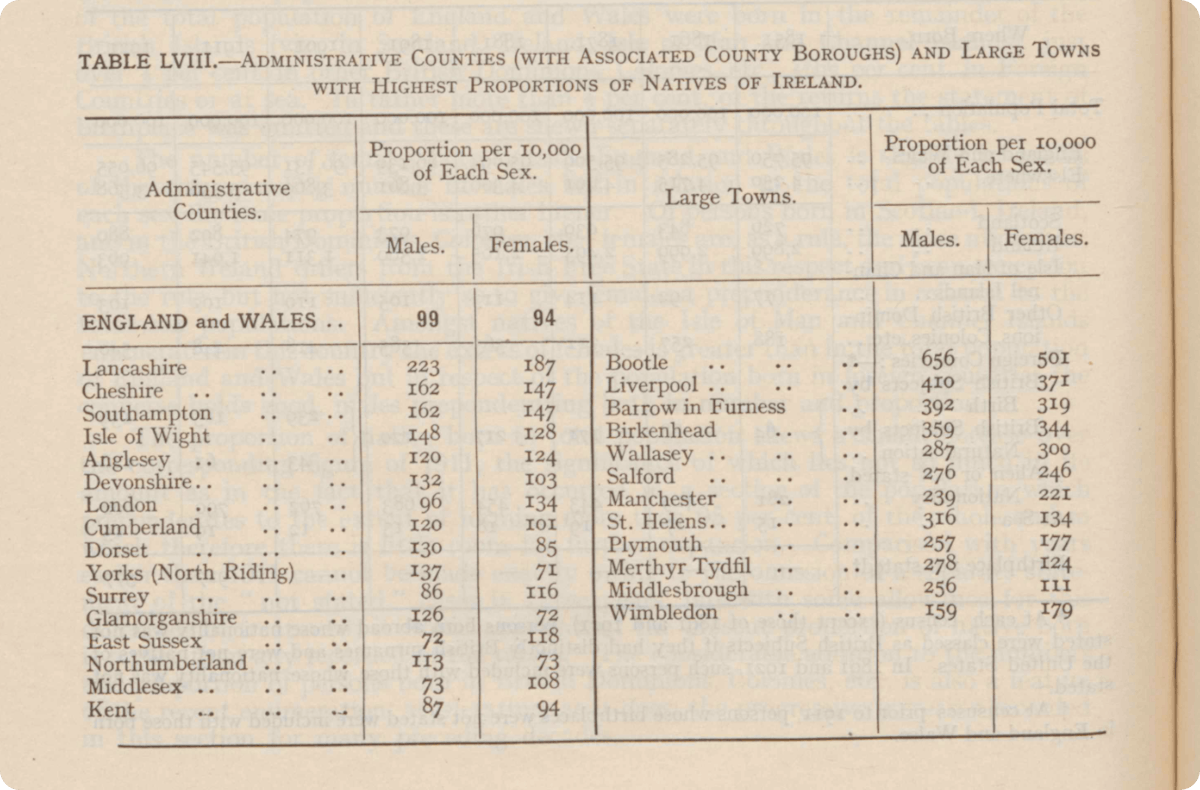
A table entitled: 'Administrative Counties and Large Towns with Highest Proportions of Natives of Ireland'.
Ireland had also just been partitioned into two new political entities, Southern (covering more than 80% of the island) and Northern Ireland. This distinction was captured in the 1921 Census, and it records that over 80% of Irish immigrants came from Southern Ireland, which became the Irish Free State the following year (now the Republic of Ireland).
But while the Irish were familiar to the British nationals, unlike those from the distant lands of the Empire, they were never really considered the same, and often suffered discrimination.
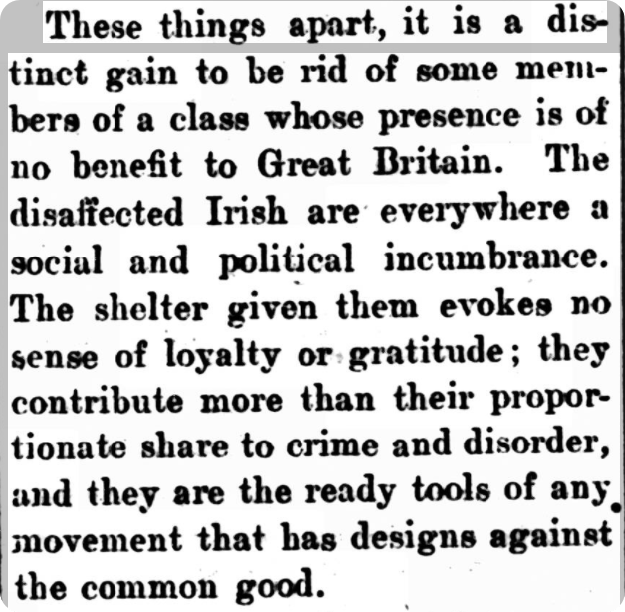
A 1923 newspaper article, denouncing Irish migrants as ungrateful criminals. View this article here.
As a consequence, immigrants from Ireland, especially those who spoke Irish, worked quickly to shed their cultural identity so they could fit in. In this way, there was never a large politically conscious Irish community in Britain like there was in America.
Irish population versus Scottish population
Like Ireland, the industrial cities offered opportunities to the second-largest cohort being those born in Scotland. These poorer migrants from both Scotland and Ireland congregated in similar areas too, like West Derby in Liverpool or Kensington in London. Both countries also supplied a disproportionate percentage of the British armed services.
But Scotland had always been more closely linked to England than Ireland was. A junior partner certainly, but still a partner in Empire. As a consequence, there is a much higher proportion of professional and more affluent Scots living in England, and they outnumber the Irish significantly in the Home Counties, East Anglia, the Midlands and of course the far North on the border.
The British Empire...
Over 100,000 are recorded as British subjects born abroad. These would almost certainly have been the children of English and Welsh people working and living in countries outside the Empire. It’s a testament to how global the country had become. Unfortunately, the records for those born within the Empire do not record the nationality of their parents, but from scrolling through the lists of those born in the Indian Empire (which included the modern countries of India, Pakistan, Bangladesh, and Myanmar, as well as the UAE, Aden and elsewhere on the Persian Gulf) it's clear many were of British parentage.
Other parts of the British Empire are also well represented in this list, chiefly Canada & Newfoundland (still a separate colony), Australia, New Zealand, South Africa, the British West Indies as well as many other parts of the world.
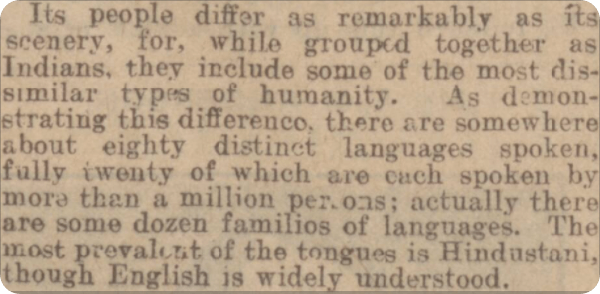
A snippet from Leeds Mercury in 1911, highlighting the British in the Indian Empire.
The differing life experience of these immigrants from the Empire is well represented by two examples. The celebrated suffragette Sophia Duleep Singh (1876-1948), is recorded in the 1921 Census living at Faraday House in Hampton Court. She was an Indian Princess, the daughter of the last Maharaja of the Sikh Empire, and her godmother was Queen Victoria who had gifted her the house she lived in. With her lived three servants, two maids, and a cook.
By contrast, another Indian migrant, Shapurji Saklatvala (1874-1936), is recorded living in Twickenham with his wife (Selri), five children, and four other family members. He was the first Asian MP elected to the House of Commons (in 1922), becoming one of the only Communist MPs ever elected.
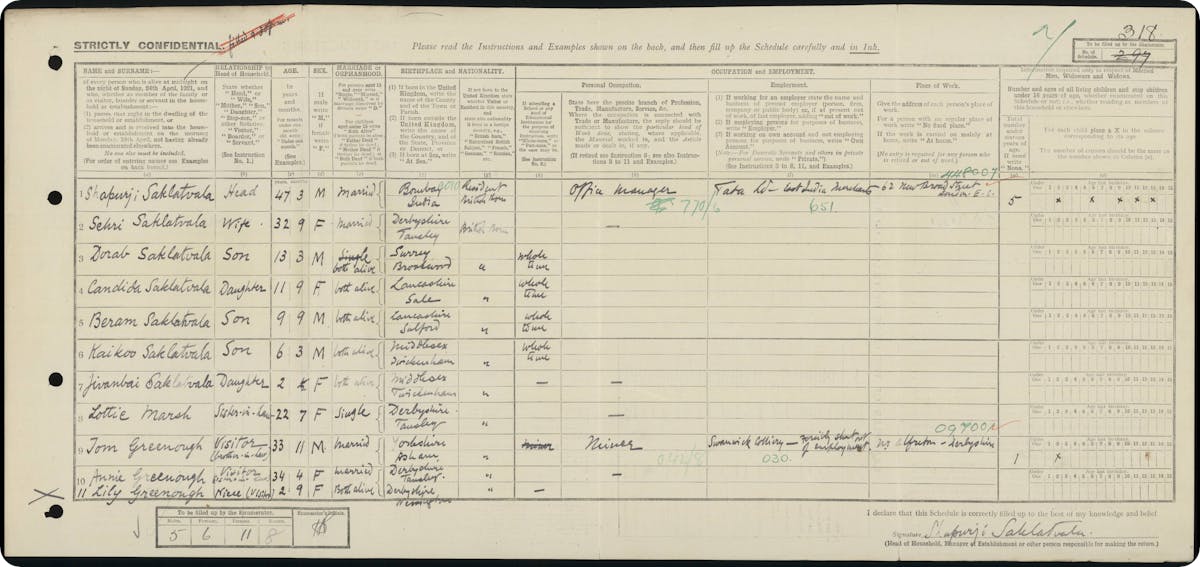
Shapuri Saklatvala's 1921 Census return. View this record here.
While most of today’s Afro-Caribbean community are descended from migrants after the Second World War, there was a growing presence recorded in 1921 from the British West Indies, mostly in service.

A table entitled: 'Persons Born in Dominions, Colonies, etc'.
For example, Martha Elizabeth Hamilton, aged 58 and born in Kingston, Jamaica, is listed as a servant in the household of Somers Irvine Spiers of Albert Grove in Portsmouth, who was born in Trinidad.
In Cardiff, John Black (born Barbados) and his Irish wife, Annie, ran a boarding house for seamen. Thirteen boarders are listed, mostly young men from the Caribbean, but some were from Africa.
...and beyond
But not everyone born outside England and Wales had a connection to the United Kingdom or the Empire - many were born as citizens of a foreign state. It may surprise you to find out that the largest group was from Russia and its former empire, followed closely by the Polish. It is suspected that as many as 15,000 of the 39,000 Russians recorded were refugees from the 1917 revolutions. Poles, by contrast, had been settling in England for centuries, but their numbers had recently increased as they struggled to gain independence in the wake of the First World War.
Discover immigrant stories across the 1921 Census
View this map full screenDame Helen Mirren’s father and grandfather are both in the 1921 Census. She is the daughter of Vasily Petrovich Mironoff (born 1913) and granddaughter of Pyotr Vasilievich Mironoff, both from Russia. They are recorded as Peter and Basil Mironoff living in Hastings in Sussex staying with the Smirnoff family, also Russian. Pyotr had come to England in 1915 on behalf of the Tsar but was unable to return following the revolutions. This is reflected in his stated occupation as ex-officer of the Russian Army and currently “out of work”.
Another Russian was the famous ballerina, Lydia Lopokova, who was of distant Scottish roots. In 1921 she is staying in the Waldorf Hotel and is listed as an Italian citizen (her first husband was Italian) working as an “Artist” and employed by “Theatres all over Europe”. She later married the economist John Maynard Keynes in 1925.
The rest of the west
All the other countries in Europe are represented in the returns too, notably France, Italy, and Germany. All of these European immigrants tended to cluster in London. 77% of Poles lived there, 64% of the Russians, 57% of the Italians, and so on. By contrast, those from the Empire and the USA were living all over the country, concentrated in the larger towns and cities.
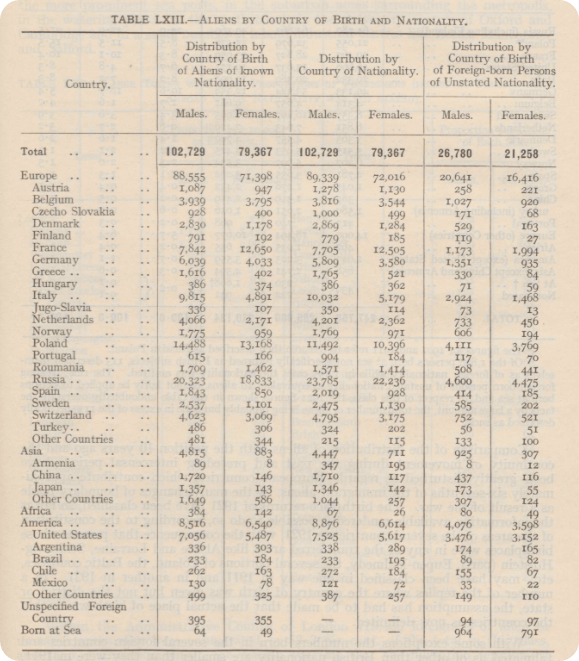
A table entitled 'Aliens by Country of Birth and Nationality', listing European countries at the beginning.
The soon-to-be-famous American author, TS Eliot, is recorded in the 1921 Census living in Wigmore Street in London with his wife Vivienne Haigh-Wood. Of course, he had to make a living, and his success was still in the future, so he is recorded as working as a bank clerk for Lloyd’s Bank on Lombard Street.
But it's worth repeating that country of birth is not a fair way to determine the number of people of different heritage and ethnicity in England and Wales in 1921. The huge settlement of the Irish over several centuries is a case in point, as are the circa 300,000 Jewish Britons by 1921. The Census did not record religion or heritage, so the relatively low numbers of people born abroad hide a much larger, diverse community. To finish with two examples:
Rosalind Franklin (1920-58), the famous chemist and x-ray crystallographer and also DNA pioneer, came from a prominent Jewish family from Notting Hill. She was only a baby in 1921 and is living in Kensington with her mother, Muriel Frances Franklin (age 27). Her ancestors, the Fraenkel family, moved from Breslau/Wrocław in Silesia and settled in England generations earlier in the 18th century.
Helena Rosa Wright (17 September 1887 – 21 March 1982) born Helena Loewenfeld, who was a surgeon and pioneer of birth control and family planning was also the daughter of Polish immigrants, also from Silesia, who migrated in the 1880s, over 100 years after the Fraenkel family.
The fact that families and individuals appear quintessentially English now or even in 1921 can often hide their origins. The country was already home to a mixed and diverse population in 1921, and this was to increase over the coming decades.
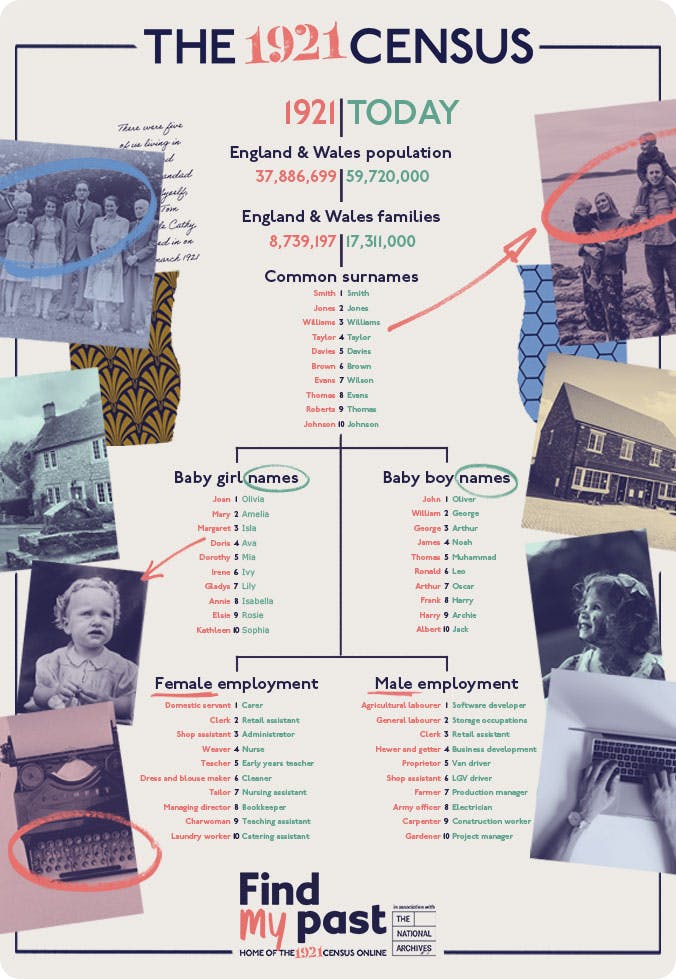
Discover 1921 versus 2021. View in more detail here.
If there was any presumption that the 1921 Census is solely for British nationals, then these figures quash it. Britain has, for many years now, been a gloriously multicultural nation, and this is reflected in our historical data. Search the 1921 Census here, and discover your roots - who knows what you may find?
Related articles recommended for you
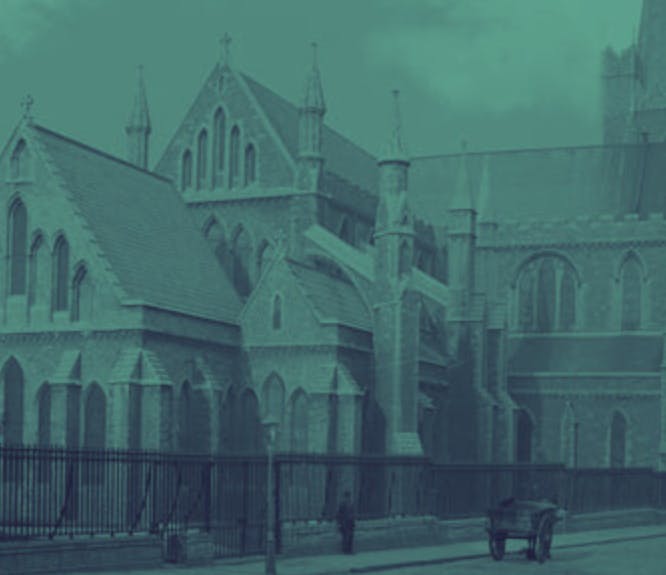
Irish family history and minority religions in Ireland
History Hub
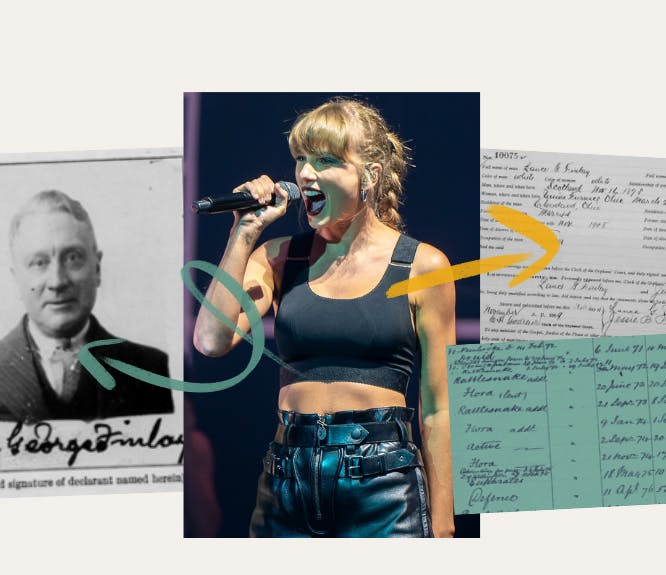
Taylor Swift’s family tree shines with love, heartbreak and the triumph of the human spirit
Discoveries
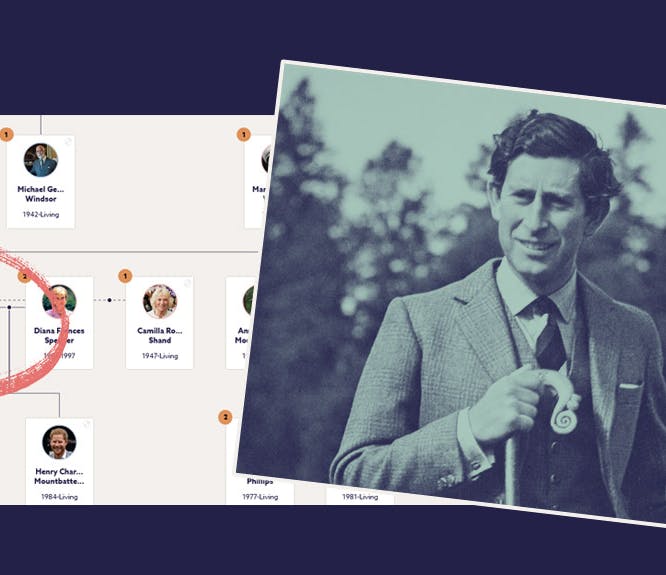
Who's who on King Charles III's family tree?
Build Your Family Tree
